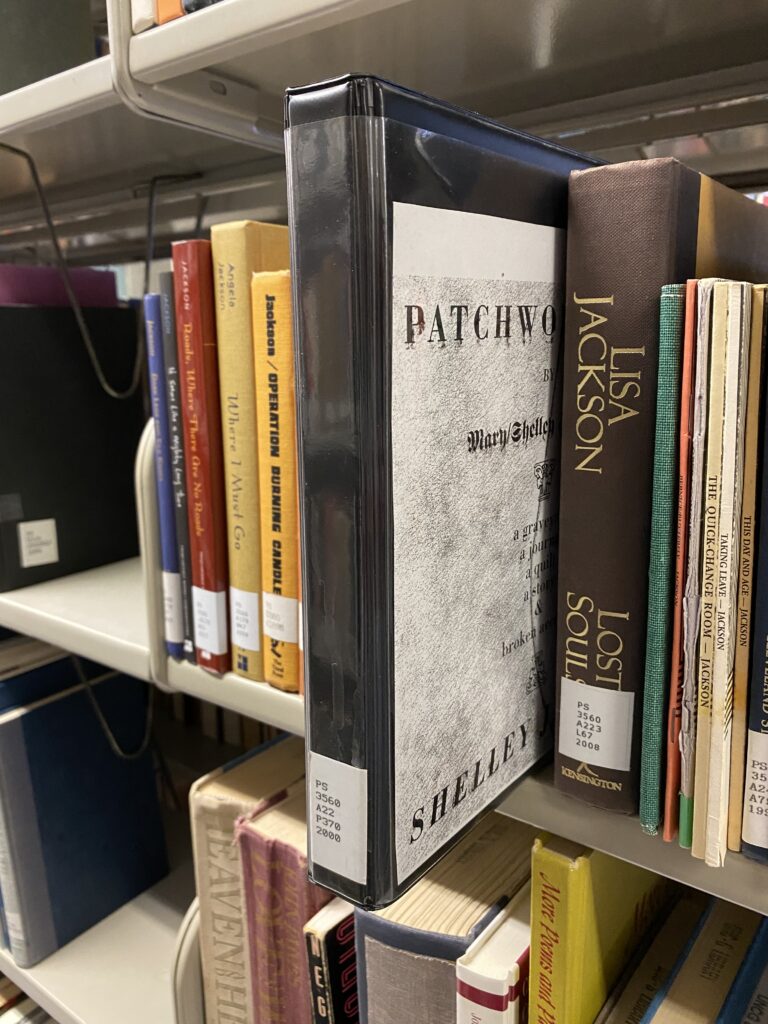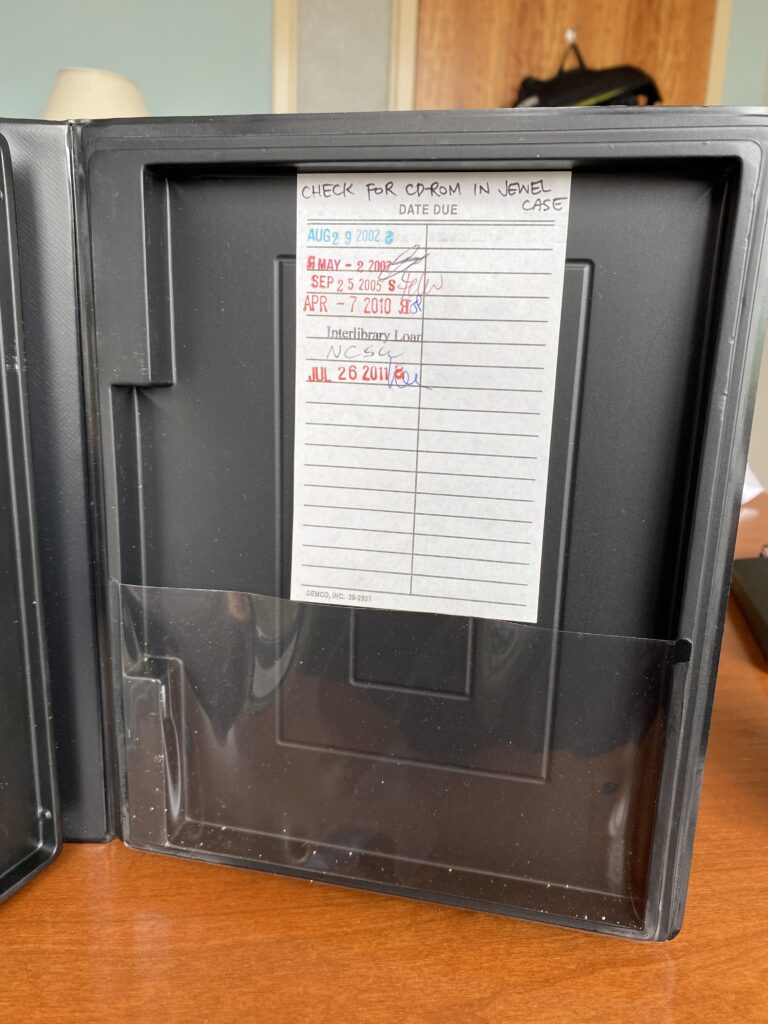Checking out Patchwork Girl
As I mentioned in a previous post, I’m currently researching how libraries have collected and circulated literary software titles published by Eastgate. I’m still sorting through the results of the ‘census’ of Eastgate titles in libraries that I’ve been conducting the past few months, but one major limitation of this project is that I’ve been collecting data exclusively through library catalogs. This is providing a good baseline understanding of where these titles have been collected, but only hint at how they actually circulate. Looking at catalog records, I can see that UNC-CH holds a copy of John McDaid’s Uncle Buddy’s Phantom Funhouse— a ‘hypermedia novel’ spread across several floppy disks, cassette tape recordings, and photocopied documents—in the ‘Reference Electronic Archive’ at Davis Library, apparently available for library use. This tells me that McDaid’s work has been collected, but doesn’t provide the whole picture. Is there a computer standing by in the library equipped with a 3.5-inch floppy disk drive and loaded with HyperCard (the software used to write the work)? Have disk images of the floppies been made, ready to be served up in a Mac emulator? Or is this just a box on a shelf in a closed stacks storage room that no one can actually use?
I plan to build on the current census project with a next phase of the research, with case studies at various libraries inquiring about how these works are stored and made accessible. As UNCG has a copy of Patchwork Girl, apparently in its main circulating collection, I decided to do a mini pilot study to see how an Eastgate title is collected at my home institution.
I took down the call number (a lovely Library of Congress number, PS3560.A22 P370 2000, placing the work in the American Literature subclass) and the location (Jackson Library Stacks – AV Materials) and walked over to the library. I haven’t yet checked out any AV materials at Jackson, so I asked at the circulation desk where they’re located. Puzzled by the unfamiliar location designation, the student employees at the circ desk called over a librarian who explained that ‘Stacks – AV’ indicates that this item is actually shelved alongside the books the general collection. I walked up to the second floor of the Jackson Library tower and…Patchwork Girl wasn’t there.
After a quick scan of the surrounding shelves, though, I found the item—shelved out of order, but not too far from home. Not able to help myself, I properly shelved the item before snapping this picture:

Pulling the bulky plastic housing for the CD-ROM off the library shelf transported me back to an earlier era: looking through software boxes at the computer store, popping open the plastic clamshell to pull out the jewel case containing an edutainment CD-ROM. As Astrid Ensslin relates, Eastgate consciously packaged their software titles like books, in folios the size and shape of poetry chapbooks.1 The UNCG library technical services circa 2000 certainly continued this ethos, putting the work into housing that screams, “this is a library copy of a literary CD-ROM!” The packaging also serves its functional purpose well, giving the item enough size and heft so as not to slip back behind the stack of books.


I checked out the item without any issue and took it back to my office. Basically, this experience was the same as checking out any book, circulating in the library’s collection like any other work of contemporary fiction taught and studied in academic circles.
The major difference here is that this item requires a computer with a CD drive capable of running software dependent on either a 32-bit Windows or Apple operating system. Up until about 10 years ago, the library itself would have had computers capable of reading this software, if the person checking out the item didn’t have a laptop or desktop themself. Now, it’s a bit like checking out a book—but the pages are blank unless you happen to have decoder glasses that aren’t made anymore. The glasses were mass produced and distributed in huge numbers all over the world, but a lot people have misplaced or gotten rid of their pair, and new pairs aren’t being made anymore.
I, fortunately, do have a pair of those glasses:

There are lots of computers out there—on eBay, in closets, collecting dust—that can play this software. While this CD in the library’s collection is not inert scrap, extra effort is needed to complete the circle. I think it’s incredibly important for libraries to play a role in facilitating the circulation of early works of electronic literature, and I love that UNCG has a working copy of Patchwork Girl still on the shelf available for check out—but the library has to make some adaptation to help complete the circle.
I’m just now noticing, looking at the checkout slip, that this copy was first checked out almost exactly 20 years ago and has circulated several times since, including an interlibrary loan jaunt to NC State. Hopefully, my little experiment, which has put the copy back into circulation, isn’t the last time it gets checked out.
References
- Astrid Ensslin, Pre-Web Digital Publishing and the Lore of Electronic Literature, Elements in Publishing and Book Culture (Cambridge: Cambridge University Press, 2022), 19.
